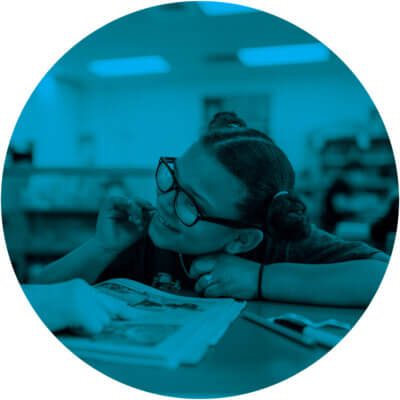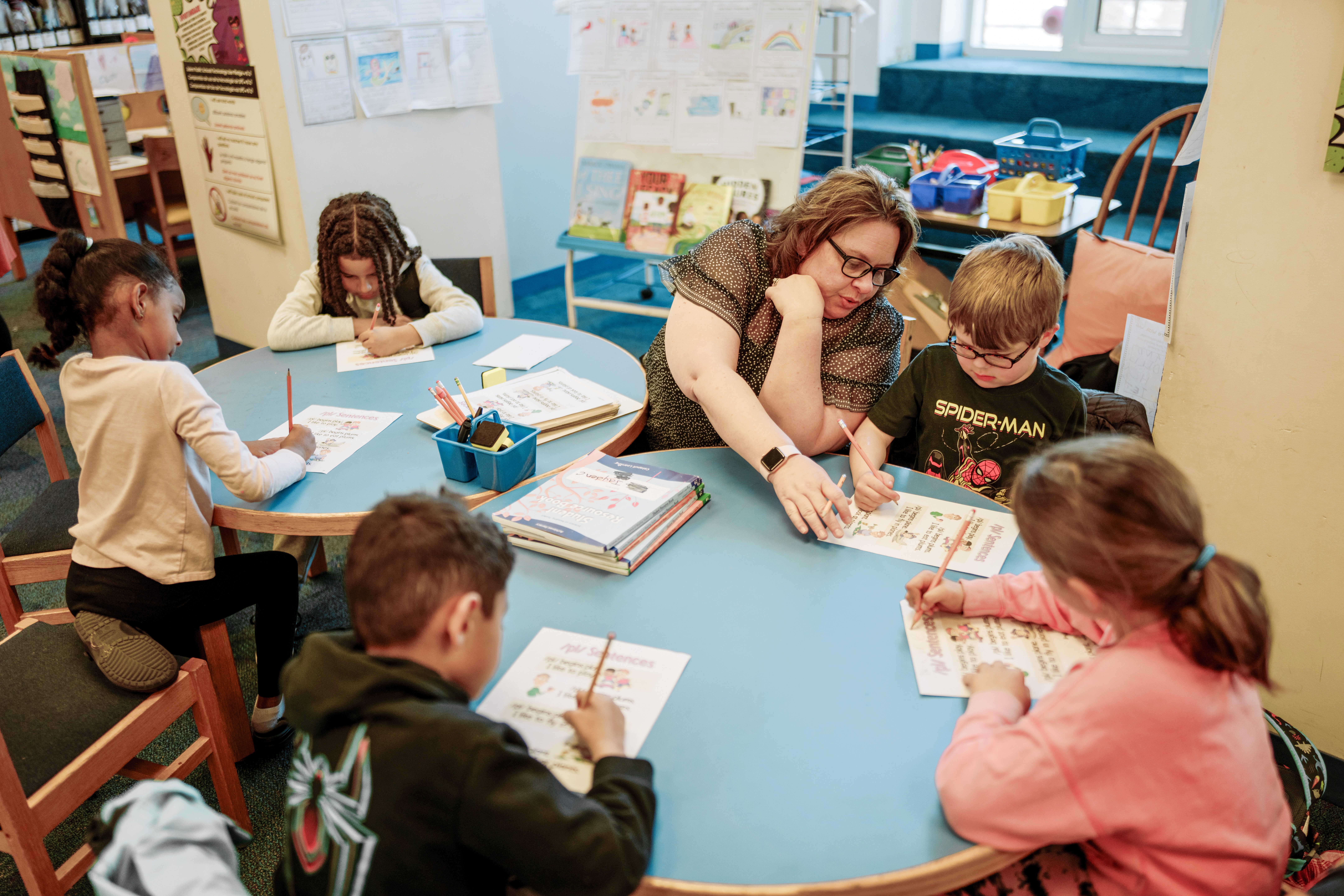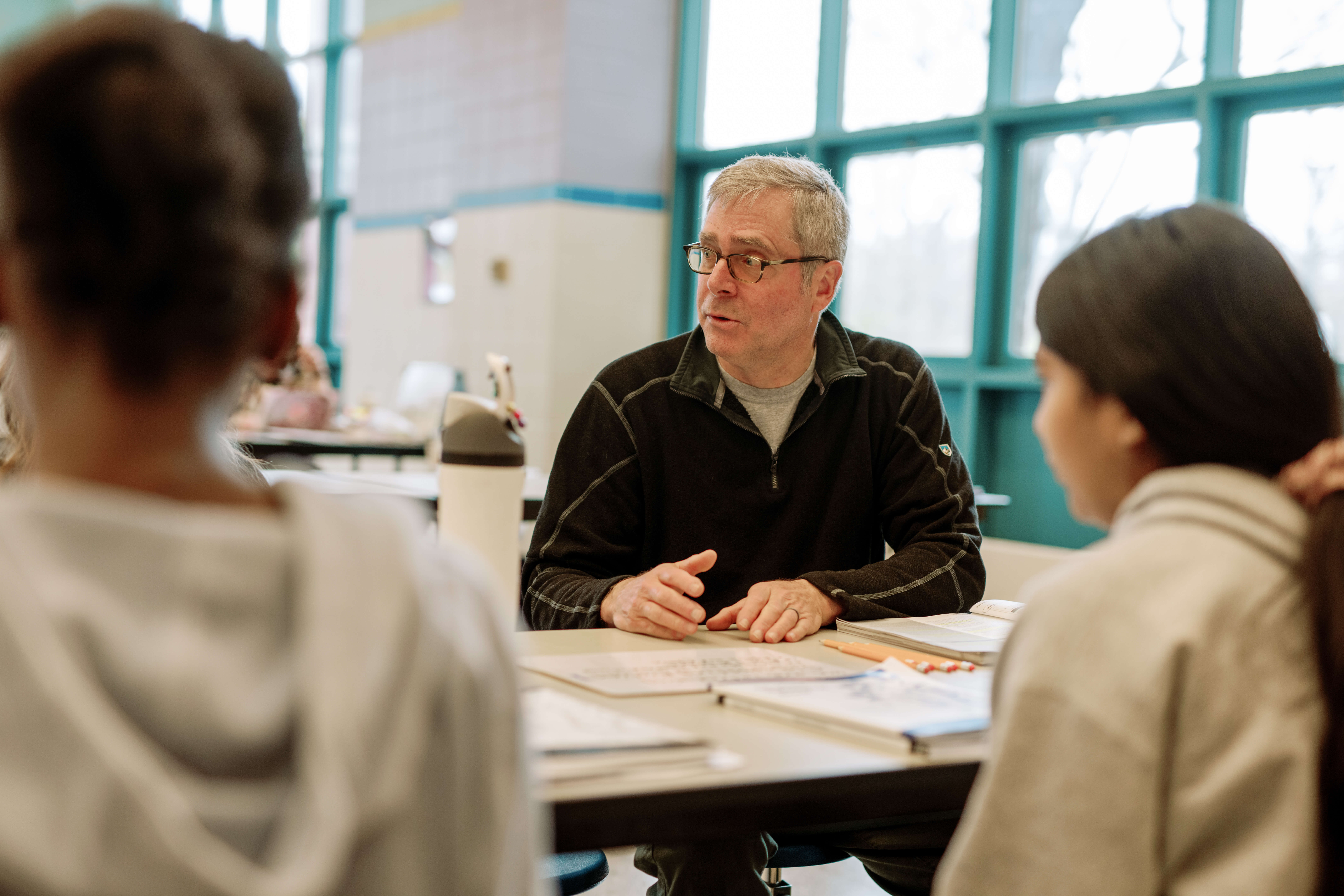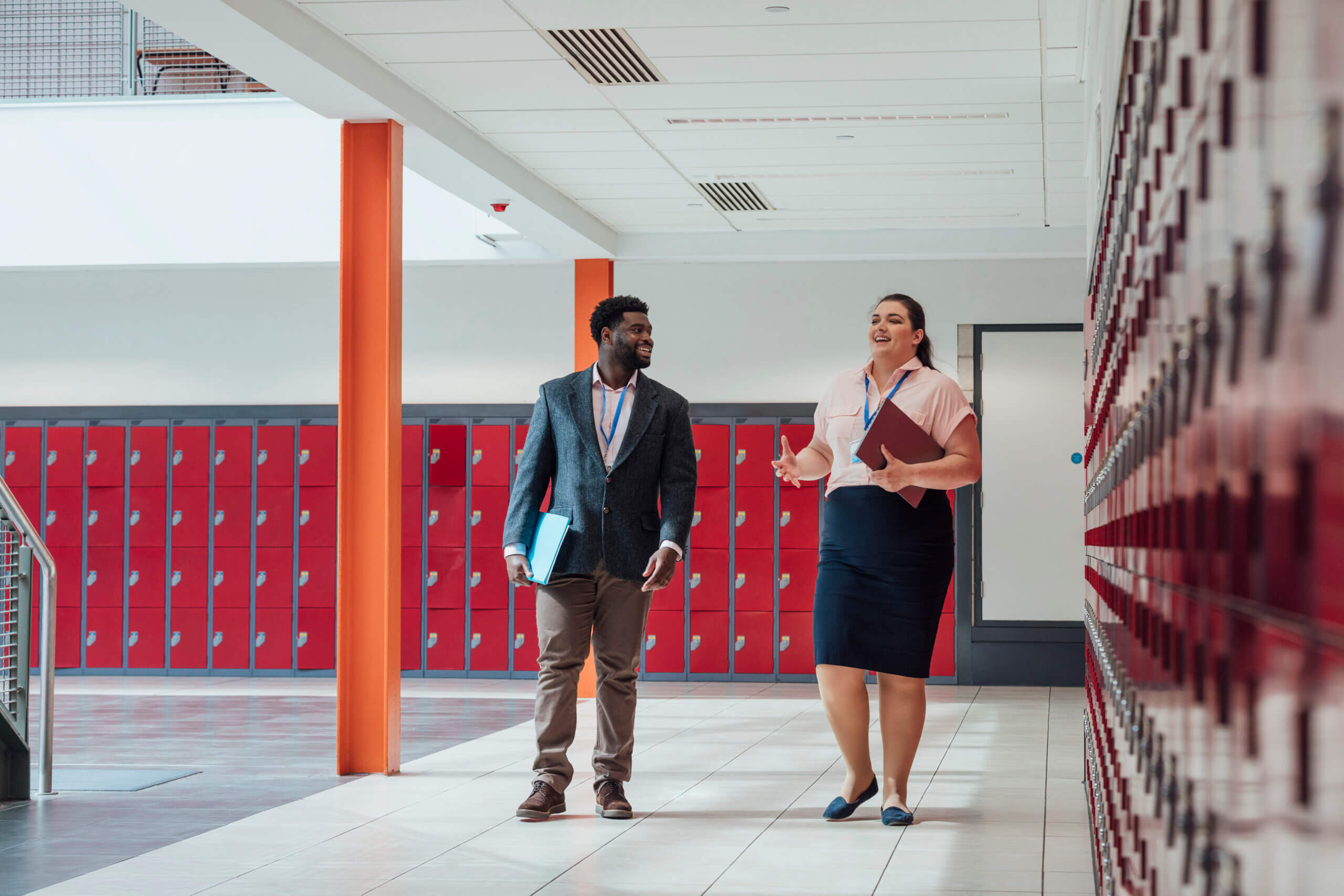Table of Contents
Based on the myriad demands for their time and talents, educators and school leaders often turn to professional learning to help solve teaching and learning challenges. But to be truly effective—and to lay a foundation for sustainable school transformation—professional development must take a wider, more holistic view and tackle core issues head-on.
Optimal teaching and learning in classrooms, and beyond, can take place only when the following three critical areas are addressed in an integrated way:
- Eliminating non-academic hurdles
- Enhancing teaching excellence
- Cultivating leadership for meaningful change
Let’s take a deeper dive into each of these challenges.
Challenge: Eliminating non-academic hurdles
Solution: Classroom Management to Unlock Learning
Every day, teachers face many non-academic obstacles that can hinder both student and educator success. Factors such as behavioral challenges, emotional disorders, and low student engagement directly affect learning—and those factors that must be addressed to fully unlock learning in the classroom.
Rather than trying to address each obstacle individually, it is critical for educators to employ tested, integrated classroom management strategies. Teachers today are challenged with an increase in student behavioral issues as well as more pressure to serve students with special needs; 66% of students with disabilities now spend more than 80% of their time in general education classrooms.1

While these challenges are well documented, only 17% of general education teachers surveyed say they feel “very well prepared” to teach children with mild to moderate disabilities2—and 3 in 5 principals say inadequate training in classroom management hampers efforts to address student behavioral issues.3 As educators can attest, these issues often result in a challenging classroom environment for all. Even more alarming is the negative impact this environment has on educator retention rates, with many teachers citing behavioral issues in the classroom as a major contributor to burnout.4
While these challenges are significant, proven classroom management strategies exist that can make a real difference today—and down the road. With the right support, educators can uncover techniques.
and best practices for student engagement, proven methodologies to enhance executive function and resilience, and effective approaches to assisting students struggling with behavioral issues.
Challenge: Enhancing teaching excellence
Solution: Instructional Excellence for Academic Achievement
Subject-matter mastery is critical not only to students’ performance on standardized tests but also to their long-term academic success. Recent NAEP results show steep declines in math and reading scores—in some cases wiping out a generation’s worth of progress.5 Right now, for schools across the country, it’s critical that educators are empowered to teach more effectively.
 One of the most meaningful ways to improve educator efficacy is to embrace an approach that is both broadly applicable and curriculum-independent. Professional development that focuses too heavily on specific textbooks, learning platforms, and other teaching resources may be less beneficial for educators in schools with unique needs. Curriculum-centric professional development also places undue emphasis on increasing content knowledge while neglecting the far more effective strategy of focusing on subject-specific instructional practices.6
One of the most meaningful ways to improve educator efficacy is to embrace an approach that is both broadly applicable and curriculum-independent. Professional development that focuses too heavily on specific textbooks, learning platforms, and other teaching resources may be less beneficial for educators in schools with unique needs. Curriculum-centric professional development also places undue emphasis on increasing content knowledge while neglecting the far more effective strategy of focusing on subject-specific instructional practices.6
This approach to professional development is, first and foremost, beneficial for students. There is also evidence that it significantly improves educator retention efforts: Research indicates that educators who receive targeted instructional coaching in a given subject are significantly more likely to continue teaching that subject the following year.7
Challenge: Cultivating leadership for meaningful change
Solution: Leadership for Positive Impact
Strong and supportive leadership is key to success at the school and student level, making it a vital component of any professional development strategy. Effective leadership also enhances educator satisfaction and retention. Without a well-defined track into leadership, there is significant risk that educators will feel as though they have no possibility of professional advancement—and may even leave the field altogether.
In the context of education, leadership development means establishing an achievement-oriented culture in schools—and building effective teams for mutual support and mentoring. It also involves creating and implementing change management strategies so that educators have a stable and nurturing work environment no matter what is happening at a school, district, or state level.
Integrating leadership development into a holistic professional development strategy equips educators with a streamlined pathway to career success and fulfillment. Prioritizing leadership in professional development not only enhances teachers’ effectiveness in their current roles but also arms them with the skills vital for career progression.
How can teachers be effectively coached?
With more than 45 years of professional development experience, Catapult Learning believes that a holistic approach to PD is the most effective way to teach and coach educators. By strengthening each educator’s capabilities and building their confidence in all aspects of teaching, learning, and development, meaningful change can be achieved in the classroom.
The three solutions discussed previously are PD tracks designed to work together seamlessly and address the key issues at the core of classroom challenges across the country. Within each track are relevant topics that are most effectively learned through one- or multi-day workshops and institutes reinforced by job-embedded coaching and asynchronous PD learning.
Classroom Management
to Unlock Learning

- Behavior Strategies
- Student Engagement Practices
- Executive Function & Resilience
Instructional Excellence
for Academic Achievement

- Literacy
- Math
- STEAM
- Assessment
- Multi-Tiered Systems of Support (MTSS)
Leadership for
Positive Impact

- Change Management
- Building an Achievement-Oriented Culture
- Developing Effective Teams
By providing holistic professional development and coaching for your educators, your school is taking important steps toward creating the optimal learning environment for students and working environment for teachers and staff.
Catapult Learning’s new PD bundles can help
We are professional development experts with a variety of impactful methods of professional learning that can transform your school and culture. No matter what challenges your school faces, Catapult Learning has a solution.
Our new professional development bundles help educators address a range of academic challenges, with best practice implementations designed to optimize classroom management, meet academic goals, and boost leadership skills across your district.
Each bundle comes with a carefully selected set of courses to be delivered in a three-day institute by one of our 250+ K-12 expert coaches.
With summer coming, now is the time to plan for your district’s newest teachers to be ready to go on day one. Our New Teacher Math & Essentials bundle—fueled by ETS Praxis math data and research on new educator subject matter understanding—addresses key areas of need for new educators, with an emphasis on core competencies and math instruction. This bundle:
- Is designed exclusively for new educators, paraprofessionals, and emergency certified teachers.
- Includes instructor-led workshops on Geometry, Liner Equations, Classroom Management, and more.
- Comes paired with our asynchronous PDNowplatform to reinforce educator development through over 10 hours of online courses.
Additionally, your district can add in job-embedded coaching to reinforce learning through in-person and virtual mentorship specifically tailored to your educators’ and leaders’ needs.
When you choose Catapult Learning as your professional development provider, you’ll work with a team dedicated to your school’s success. Our experts will work with you to tailor and execute an implementation plan aligned to your school’s specific needs assessment and timing requirements.
Let’s get started! Learn more about our New Teacher Math & Essentials PD bundle—as well as our other professional learning bundles—by visiting https://catapultlearning.com/programs/pd-bundles/ today.
Sources:

